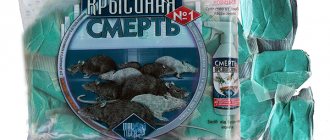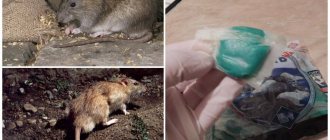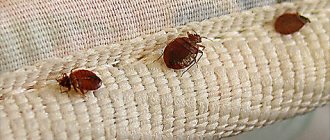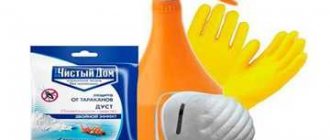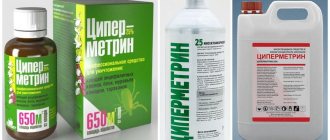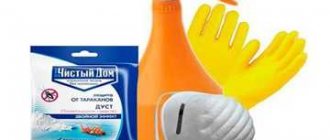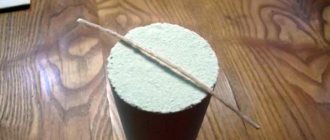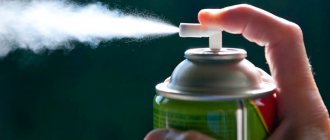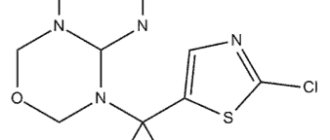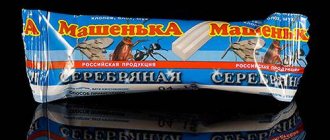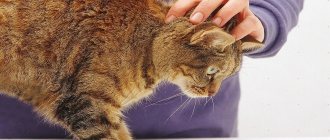The appearance of rats in the house is not only unpleasant, but also very dangerous. Therefore, when you notice the first pest, immediately start a war. “Rat Death” is recognized as an effective remedy. The drug is easy to use and ensures rapid death of tailed animals. And the instructions for using “Rat Death” will help you become familiar with the technology for exterminating rodents.
Rodents, moving around the apartment, spoil food, contaminate surfaces with their excrement, and can chew not only furniture, but also electrical wiring, which often leads to fires. But the greatest harm of tailed animals lies in their ability to endure extremely serious diseases, such as plague, hemorrhagic fever, leptospirosis, and rabies. Therefore, you should not hesitate to exterminate rats, because you are putting yourself and your family at serious risk.
How is Death of the Rat 1 different from Death of the Rat 2?
Reviews about “Death of the Rat” on the Internet are positive. There are two drugs on sale: “Rat Death 1” and “Rat Death 2”.
The difference is that the preparations contain different active rodenticidal substances:
- Brodifacoum;
- Bromadiolin.
The second is superior to brodifacoum in its toxicity to pests. Also, the funds come in different forms. The first poison is blue-green lumps, and the second looks like pieces of meat.
Danger to humans
If “Rat Death” is used correctly, it does not cause harm to humans. The drug does not release active components into the air, so the risk of “inhaling” poisons is completely eliminated. And even if you accidentally touch the poison with your hands, you will not face any negative consequences after thoroughly washing your hands with soap.
Symptoms of intoxication
Poisoning can occur only in one case - if the poison gets into the stomach. Moreover, it all depends on the dose. If a small amount of poison enters the digestive system, the liver will independently deactivate the toxin. But in the case of deliberate consumption of poison (for example, by small children), there is a threat to life. If signs of intoxication appear, be sure to seek help from a doctor. Only specialists can prevent the development of internal bleeding. The following symptoms indicate poisoning:
The antidote to the anticoagulant is the drug “Vikasol”. It is not able to neutralize Rat Death, but completely compensates for the effect of the poison. In case of minor intoxication, tablets will help; in case of severe poisoning, Vikasol is administered intravenously in a hospital setting for 15-30 days.
What to do if there was contact with poison
Even the most careful handling of the drug cannot always protect against accidental contact. If you come into contact with poison, do not panic. Take all measures to minimize the risk of intoxication. If the poison is ingested:
Do not forget that poison is dangerous not only for people, but also for animals. If your pet has ingested a dangerous drug, take it to the vet immediately. The animal will need intestinal lavage, detoxification therapy, and vitamin K injections.
Reviews of “Death of the Rat” are mostly positive. Those who have tested the poison emphasize its ease of use and high effectiveness in the fight against rodents. Many people share a way to protect children and pets from eating poison. To do this, you need to take a closed box and cut small holes in it, allowing only the rat to get inside. Briquettes are placed at the bottom. The rat will easily get in and out, and children and pets will be reliably protected from the temptation to “test their teeth.”
Video on the topic
“Rat Death” - how to get rid of rats, review
How does the product work?
It is easy to understand how the poison affects rodents by studying the composition of the drug. On the fourth day, rodents that have consumed the poison begin to experience suffocation. Internal bleeding begins. Because of it, the animal dies on the 8th day.
"Rat Death No. 1"
How to use?
In order not to leave a human smell on the poison, which can scare off a rodent, the drug is put into bags for mice using tweezers. If it is used as poison for rats, then 2-3 bags of poison will be required. It should be placed in places close to rat nests and their habitats. In residential premises, it is better to spread it along the walls every 2-15 m. For two weeks, you need to monitor the decomposed poison and replenish it where it is eaten. When the pests stop eating the poison, you can stop spreading it.
The death of rodents will occur 4 days after its consumption. 10 days is the final period for the full effect to occur.
Everything that remains after poisoning pests (remains of poison, boxes, bags), as well as their corpses, must be burned.
Forms of release and principle of operation
The drug, called “Rat Death”, is produced in Ukraine. The raw materials for the production of poison are supplied from Italy. The product destroys both mice and their rather smart relatives - rats.
No. 1, 2 and a new product in the form of glue
The company produces the drug in two forms. Both remedies are very effective. To decide which drug to give preference, consider the comparison table below.
Table - Characteristic features of the varieties of the drug
| Category | "Rat Death" number 1″ | “Rat Death” number 2″ |
| Active substance | Brodifacoum (anticoagulant - a substance that inhibits blood clotting) | Bromadiolone (more powerful anticoagulant) |
| Toxicity | Average | High |
| Appearance | Blue-green substance | red matter |
| Timing of death | 4-8 days | 4-8 days |
| Lethal dose for one rat | 2 g | 6 g |
| Environmental hazard | Very high | Average |
Despite the different active ingredients, both drugs work effectively and provide the same results.
You can find another type of drug - “Rat Death” glue, produced in 135 g tubes. But such a product only fights mice and is powerless against rats.
Additives in the composition
Both drugs are produced in the form of briquettes with a dough-like structure. They are packaged in special bags that allow odors to pass through well. But since not a single active ingredient has an aroma, the composition of the “Rat Death” drug includes special additives that can attract rats:
- flour;
- sugar;
- natural flavors;
- vegetable oil.
According to reviews, the drug “Rat Death” has a mummification effect. However, the manufacturer himself does not state this, and the poison does not contain the corresponding substances.
How does the poison work?
Bromadiolone and brodifacoum are among the rodenticides that have an anticoagulant effect. Therefore they work exactly the same. Only when choosing drug No. 1 will you need a larger amount of poison. If the choice is No. 2, the doses are significantly reduced and the product is used more sparingly. How does “Rat Death” work on rodents? Schematically, this can be described in four steps.
- Appetizing bait. The drug, which has a fragrant odor for rats, attracts rodents. Since the poison contains very little toxic substance, the animals’ sensitive receptors do not detect it. And the rat calmly eats the drug.
- The process of intoxication. The poisonous substance penetrates the liver. The anticoagulant blocks the synthesis of vitamin K, which is responsible for blood clotting.
- Detrimental impact. The active substance is not excreted in the urine, but gradually accumulates. In the pest’s body, hemorrhages begin in the internal organs.
- Death. Approximately on the third or fourth day, a lethal dose accumulates, which leads to the death of the rodent.
One of the main advantages of the drug, which ensures its high effectiveness, is its delayed action. Rats are quite intelligent creatures. Having seen the death of their relative, they will forever remember the smell of poison and will never touch this poison again. But since Rat Death does not cause immediate death, rodents continue to eat the pellets without fear.
Precautions when using Rat Death No.1
Pregnant and lactating women, as well as adolescents under 18 years of age, should not use or come into contact with this product. People suffering from liver and blood diseases should not be present during rodent baiting work.
The drug must be used strictly according to the instructions in the instructions. Under no circumstances should you come into contact with poison with your bare hands. Do not place the product near bodies of water or places accessible to children and pets.
precautionary measures
Read on topic - The dog ate rat poison - what to do
Mode of application
The “Rat Death” product is a ready-made drug and does not require any preparation before use. To carry out deratization, it is necessary to cut the cardboard into squares measuring 10 by 10 cm or prepare nylon covers. Then put on gloves and open the package with the product. After this, arrange the filter bags 1 piece at a time. from mice and 2 pcs. from rats onto prepared substrates and place them in places where rodents may move and live, namely in corners, under furniture, near burrows, along baseboards. The distance between baits should be 2-5 m. Putting poison on the floor is prohibited.
According to the instructions for use, the “Rat Death” gel should also be applied in a continuous line 1-2 cm thick on cardboard, plastic or other material with a smooth surface.
You should check the presence of baits every day and, if they are eaten by rodents, re-lay them out. The first results of the drug become noticeable after 4 days. If rodent corpses are found, they must be taken outside and buried in the ground to a depth of 50 cm. The maximum result is achieved after 8 days. Unused filter bags must be disposed of.
Advantages and disadvantages of Rat Death poison
The advantage of this product is its high efficiency and availability. The poison “Rat Death” has a lot of positive consumer reviews. The death of rodents is inevitable when the pest consumes poison as food. The product has a low cost and is available for purchase to the public. The disadvantage of the poison is its toxicity. It is dangerous if it enters the gastrointestinal tract.
The downside is the fact that rodents prefer to end their life in open areas, so they crawl out of holes and die outside their shelter.
Why are rodents dangerous?
Pests that appear on the territory of a house or household pose a threat not only to the harvested crop, things, electrical wiring, building materials, but also to the health of the inhabitants of the house and their pets. Rats are dangerous to humans with their bites. They can cause dangerous infectious diseases, such as:
- leptospirosis;
- plague;
- rabies;
- trichinosis;
- tularemia;
- streptobacillosis.
Rats are well-organized animals. They multiply quickly, adapt well to changes in living conditions and the environment, have good sense of smell, intelligence and are able to transmit information to each other about impending danger. They recognize rat poisons and can even adapt to radiation, so it is difficult to choose the right rat poison and poison them.
All these features of pests force people to look for a more effective remedy for rats, which they cannot recognize by smell as poison. Specialists from the Italian laboratory Dr Tezza have developed a specific poison for rats, the use of which gives very good results. The drug is called Rat Death and is a powerful poison.
Causes of mice
Mice in the kitchen
Mice are dangerous pests; when they get into the house, they not only destroy food and furniture, but can also be carriers of dangerous diseases such as toxoplasmosis, leptospirosis, typhus, rabies, and tuberculosis. Rodents come to people's homes for food and warmth, enter homes through ventilation holes, technological cracks, leaking joints, cable ducts in reinforced concrete structures, and through water supply risers.
Mice usually settle in quiet places where people rarely look. Favorite places are under the bathroom, under the closet, in the pantry, under suspended ceilings, behind plasterboard panels and under baseboards.
One of the main reasons for the appearance of rodents is unsanitary conditions. Unwashed dishes, leftover food on the table, crumbs on the floor, organic garbage - all this attracts mice. They come to apartments from basements, garbage chutes and trash bins located near the house.
Additional Information! Private houses located in close proximity to cellars, barns with pets, and outbuildings in which grain is stored also attract the attention of small pests.
Lethal dosage for humans
Persons who deal with rodenticides, in order to avoid disastrous consequences, must know how rat poison acts on the human body, what dosage can be fatal. The chemical has several varieties, each of which has its own dose that is life-threatening.
The condition of the human body also plays a huge role. If there are pathological processes in the liver, then the poisoning will be very strong. This is due to the fact that toxins destroy the necessary elements that are responsible for blood clotting. And the liver replenishes them.
Getting poisoned by mouse poison is quite difficult. For example, the lethal dose of Warfarin is 60 mg/kg body weight, Bromadiolone is 300 mg/kg.
Based on these figures, it can be understood that such an amount of poison can enter the body only as a result of its repeated use over a long period of time. Even mice must consume the bait within a week for them to die.
If we translate this dose into ready-made rat poison preparations, it turns out that in order for an adult to die, he needs to consume 150 g. This is a lot. Even a child needs to eat a large piece of the chemical to become poisoned. Therefore, rat poison is life-threatening only in large quantities if consumed over several days.
Poisonous substances of the drug can be poisoned not only orally. Many of them can be absorbed through the skin. That is why people who work with these chemicals must follow all safety rules (protective gloves, suit, etc.).
Features and types of rodenticide
Rat poison (rodenticide) is one of the most radical means designed to combat rats.
Poison is a mixture based on chemicals. There is no clear answer to the question of what rat poison looks like. The poison can be produced in various forms in the form of tablets, granules, briquettes and pastes. When used, a poisonous drug is mixed with bait and placed near burrows or in places where rats may appear. Using rodenticide Based on the type of action, rodenticides are divided into:
- Chronic rat poisons. They do not pose a risk to the health of pets, as they are used in small doses. This is why they have a delayed effect. Therefore, the destruction process using this method will take some time. But despite this, rodenticides of this type are much more effective. After all, rodents do not combine the death of their relatives with eating poisoned bait.
- Acute rat poisons have an immediate effect on rodents. Suspecting the relationship between death and the delicacy of the bait, the rats try to avoid the poison. And besides, rodenticides of this type pose a great danger to the health of pets. Fast-acting poisons are prohibited for free sale and can only be used by professional rodent extermination services.
Rodenticides can also be anticoagulants and have a mummifying effect, according to manufacturers. A feature of the second type of drugs is not only the ability to destroy, but also the mummification of the carcass of a poisoned animal, which eliminates the unpleasant stench.
Anticoagulants do not have similar properties. However, they are much more effective than drugs of the previous type and are safer for human health and pets. Commercially available rat poison contains substances that cause blood clotting disorders (zoocoumarins). The penetration of poison into the animal’s body causes internal bleeding. Rat poison Rat repellents are in great demand among the population:
- Warfarin (Zookoumarin);
- Ethylphenacin;
- Izoindane;
- Ratindan and others.
They act slowly, without accumulating in the body. Sometimes pests develop immunity to them.
Difenacoum, Brodifacoum, Flocumafen, Bromadiolone are more toxic second-generation anticoagulants. They have a quick action and cumulative effect.
Main types of toxic substances and symptoms of poisoning
A complete list of symptoms of poisoning can only be determined depending on the type of poison that was used to make poison for the rodent. The following types of toxins can be used:
- 1st generation rodenticides;
- 2nd generation rodenticides;
- ratsid;
- vitamin D3;
- zinc phosphide.
Symptoms of a dog being poisoned by a particular group of poisons may vary. It is their determination that will help the veterinarian choose the right antidote and save the animal.
Intoxication with 1st generation rodenticides
Intoxication with 1st generation rodenticides disrupts the dog’s blood clotting process (due to impaired vitamin K synthesis).
Signs of poisoning by this group of substances are as follows:
- thirst;
- frequent urination;
- general weakness;
- decreased appetite;
- bad breath.
Intoxication with 2nd generation rodenticides
In case of poisoning with 2nd generation rodenticides, the same symptoms are observed as with substances of the first group, but with the addition of:
- urinating pink urine (a sign of impaired kidney function);
- redness of the eyes (indicates high blood pressure);
- blood with foam when coughing;
- dark stool of liquid consistency;
- black vomit;
- nosebleeds (as a result of poor blood clotting).
The first thing to appear is blood from the nose. It is this symptom that allows the owner of the animal to suspect poisoning by rat poison. The dark color of stool and vomit is due to the fact that a reaction of gastric juice and blood occurs in the body. The blood coagulates as a result of a reaction with hydrochloric acid and becomes dark in color.
The dog was poisoned by a rat
Vomiting in a dog
The main signs that a dog may have been poisoned by rats:
- cough;
- poor pulse;
- severe vomiting;
- absolute absence of urination.
Intoxication in dogs with zinc phosphide
Zinc phosphide is a strong toxin, including for the human body. It is used exclusively under the supervision of specialists for deratization. In most cases, zinc phosphide is used by specialized organizations. When zinc phosphide enters the stomach, a reaction occurs, releasing a dangerous gas. The amount of gas depends not only on the poison consumed by the dog, but also on the amount of food eaten. The gas that forms in the stomach provokes the following symptoms:
- flatulence;
- panic attacks;
- shock;
- abdominal pain;
- impaired coordination of the dog’s movements (possibly staggering when walking);
- disturbance of consciousness;
- convulsions (long-term, not eliminated by anticonvulsants).
Vitamin D3 poisoning
Vitamin D3 poisoning, at first glance, seems impossible due to its general usefulness. However, extremely high dosages are used to kill rodents. Vitamin D3 poisoning sharply increases the concentration of P and Ca in the blood, causing kidney problems and death of the animal.
Symptoms of vitamin D3 poisoning:
- bad breath;
- frequent urination;
- general weakness;
- a sharp decrease in appetite.
It should be noted that signs of vitamin poisoning appear only 2–3 days after the dog ingests the poison.
The dog's blood is taken for analysis.
Despite the wide range of symptoms of rat poisoning in dogs, diagnosing such poisoning can be quite difficult. This is due to the fact that some of the listed symptoms may be signs of other diseases, including infectious ones. When an animal consumes poison, there is a high risk of treating other diseases rather than poisoning. The most accurate way to confirm poisoning is to have your dog tested by a veterinarian.
Rodent control
Today, there are numerous rodent control products on the market, but defeating them is not so easy. Often, buyers note that rats eat the poison stored for them, but the next day new holes or other signs of the presence of uninvited guests appear. From this we can conclude that most drugs are not very effective.
Today, a new generation of rodenticide has appeared on the market, which differs from its predecessors in its highest efficiency. This is "Rat Death", the reviews of which are very impressive. Consumers note that it is attractive to rodents and leaves no chance for the latter.
Cleaning the house after treatment
Chemical treatment
After treating residential premises with chemicals, it is not advisable to wash the floor for 3 days, and do not wipe baseboards and hard-to-reach corners for as long as possible. If deratization was carried out, the rooms should be ventilated after 2-3 hours, and all working surfaces should be wiped with a soda solution. General cleaning is carried out 21 days after disinfection.
Remains of used pesticides must not be thrown into garbage containers or water bodies; they should be burned or buried in the ground to a depth of at least 50 cm.
What makes it attractive?
Rats carefully study a new type of food. If he scares them with something, the rodents will refuse to try, and all efforts will go to waste. Attractiveness is ensured by its unique shape, not a tablet, but a dough-like mass. To date, there have been no similar preparations, so your guests will have no reason to refuse the feast.
The second important point is the quality composition. Earlier generations of rat poison were poisoned grain or meat. Today, most rodents recognize such baits well and refuse them. And here the basis is aromatic sunflower oil, flour and sugar, that is, sources of clean energy that are very valued by all living beings.
Terms of use
The instructions clearly describe all the rules that should be followed. Their violation can lead to negative consequences and harm human health.
Mode of application:
- First, you should choose a place where to place the bait: rodents should notice it immediately. Then prepare palm-sized stands made of cardboard (you can also use tin lids).
- Prepare tweezers and toothpicks, put on gloves.
- Then take out the package with the poison and place it, without unfolding, on the stands. Mice need one serving, rats need two briquettes.
- Treats should be placed near burrows and in places where rodents move. For effective destruction, briquettes are placed at a distance of 2 to 5 meters from each other for mice and from 5 to 15 meters for rats.
Pest activity occurs at night, so every morning you need to put a new briquette in place of the one eaten.
After all the rodents have been exterminated, you will need to collect the poison that remains intact in a bag and bury it to a depth of 0.5 m. Under no circumstances should you throw the remains into the trash can, because cats, birds and yard dogs can eat them. The corpses also need to be buried so that the animals do not get poisoned by them.
